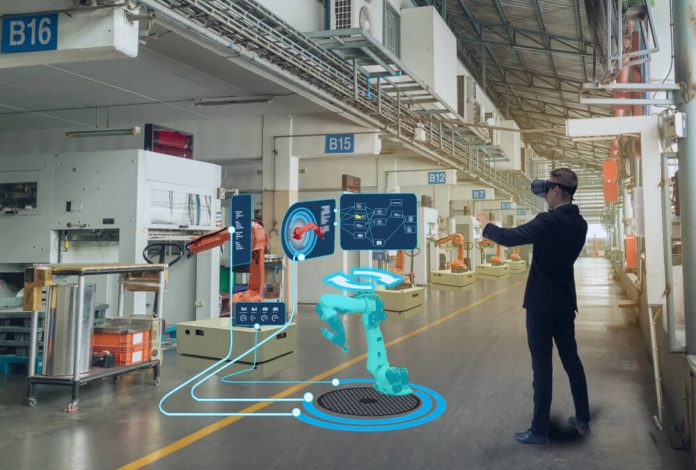
Many Learning professionals fall into two buckets when launching their first virtual reality (VR) experience:
- The pie-in-the-sky, “let’s replace everything with VR” perspective
- Constantly cycling through the multitude of logistics to consider and the paralysis that inevitably follows
Let’s explore the main sticking points that often pop up when trying to implement a VR learning experience—from how to handle IT to tips for gaining buy-in—and ways to overcome them.
Sticking Point #1: Trying to Boil the Ocean
There is so much promise and opportunity with VR in learning that many people begin their journey trying to do too much too soon. However, the “let’s turn all training into a VR experience” approach is rarely warranted and almost always unattainable.
Consider the purpose of your VR project before jumping full steam into an ambitious initiative. Choose VR for those experiences that are too expensive, dangerous, or impossible in the real world, and learn from your first experience before buying every employee a headset.
We learned in our earliest pilots that VR was more effective as an assessment or capstone activity for other more traditional learning deployments than standard assessments. The VR component allows learners to put all their new skills into practice in one comprehensive simulation.
Sticking Point #2: Handling IT Objections Strategically
A big obstacle to launching a VR training experience is getting your IT team on board. Many IT teams are overwhelmed at the thought of managing VR hardware and software, which could result in a fast and fierce “no” from them.
There are two ways you can overcome this issue with IT:
- Find an IT ally who sees the potential in VR and will be your VR champion to work proactively within the IT team to address their concerns. Once on board, you can bring the actual VR infrastructure to IT and plan to test together.
- The other option is to work with VR technology outside your IT infrastructure to create, experiment, and test content independent from IT until you have a developed product. This may be the best option when your IT team simply doesn’t know what VR is.
Additionally, a great way to bypass many IT concerns and bring content to the masses is to purchase content that’s already available. Ready-to-go content minimizes the amount of time you need to keep IT interested and open to the possibility.
Outside of buying off-the-shelf VR content, you also can use a service such as Talespin. Non-programmers can develop content using Talespin’s avatars, scenes, and programming environment. You can modify characters, do voice-overs, and interact within 3D rooms. Options such as Talespin are low risk and low investment with high-potential outcomes, and it might get IT and other stakeholders on board.
Sticking Point #3: Gaining Stakeholder Buy-In
Finding a champion who is interested in investing in new technology and approaches to learning can be difficult. To gain stakeholder buy-in, you need a compelling case.
Your first task for winning stakeholder interest is identifying the necessity; a solid use case will explain how VR training can solve current high-stakes challenges for learners or improve business outcomes.
You also will need to explain the financial feasibility. Luckily, the earlier VR is implemented in a training program, the cheaper it is. Because content is more general and applicable to a wide range of learners, the cost-per-learner is significantly reduced.
Some training topics for soft skills that have a low cost include content on high-stakes conversations, customer satisfaction, and safety management. For hard skills, great options include general safety training, accurate and safe operations, and practical exercises.
The more prepared you are to demonstrate positive outcomes, such as lowering safety incidents by a certain percentage year over year, the easier it is for your stakeholders to say, “Yes.”
Sticking Point #4: Measuring Success
Measuring success is critical for maintaining stakeholder buy-in and keeping others engaged. To measure success, it’s important to first identify the problem you want to solve (such as too many safety incidents), and then to figure out, at least in part, what the issue stems from (such as a lack of training during which safety skills can be applied and practiced).
Next, you need to determine a means to measure the output of your training. Your training output should be measured in terms of both feedback from learners on the experience and perceived efficacy, as well as in terms of the impact of learning through pre- and post-assessments.
Many of the commercially available solutions such as Talespin and Immerse have robust measurement dashboards that can provide feedback on learner performance.
Sticking Point #5: Logistics of Deployment
Another area many get stuck in is how to roll everything out to learners. If you have the benefit of your employees using a facility for VR training, your orientation efforts can be less involved, and there are far fewer concerns to manage.
But if employees are working from home, you will need to be a lot more detailed in use instructions and other deployment considerations. Deploying VR training to remote learners involves figuring out the purchasing, shipping, and management of hardware (headsets, handsets, batteries, etc.), managing access to software, and orienting learners to properly use both the hardware and software.
A good communication plan for properly deploying a VR training initiative is invaluable. It will help you understand your users and their level of exposure better, too. Our teams have recorded step-by-step videos that show the learner everything from unboxing the headset and creating a safe space to setting up Wi-Fi and using hand controllers.
VR Development Gets Easier Each Time
Your first VR project will be a learning experience, but as time goes on, you will learn more about the development and deployment process and about your learners. Start with a small pilot to build the skills you and your learners need and to measure success. It only gets better from there—and more rewarding.




